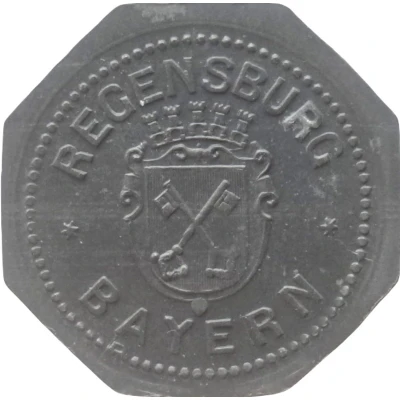


© Willem63 (CC BY-NC-SA)
5 Pfennigs - Regensburg ND
1917 year| Zinc | 1.77 g | 19.0 mm |
| Issuer | City of Regensburg (Federal state of Bavaria) |
|---|---|
| Emperor | William II (Wilhelm II) (1888-1918) |
| Type | Standard circulation coin |
| Year | 1917 |
| Value | 5 Pfennigs (5 Pfennige) (0.05) |
| Currency | Mark (1914-1924) |
| Composition | Zinc |
| Weight | 1.77 g |
| Diameter | 19.0 mm |
| Thickness | 1.07 mm |
| Shape | Octagonal (8-sided) |
| Technique | Milled |
| Orientation | Medal alignment ↑↑ |
| Demonetized | Yes |
| Updated | 2024-10-04 |
| Numista | N#64492 |
|---|---|
| Rarity index | 69% |
Reverse
Pearl circle surround legend with denomination centered
Script: Latin
Lettering:
KLEINGELDERSATZMARKE
5
★
Edge
Plain
Comment
FUNCK (Edition 2000) ► FUNCK (Edition 2012):F#442.3 ► F#442.1Aa
F#442.5a ► F#442.1Ab
F#442.5b ► F#442.1Ac
F#442.5c ► F#442.1Ad
F#442.6 ► F#442.1B
Interesting fact
The 5 Pfennigs - Regensburg ND (1917) coin was minted during a time of economic turmoil in Germany, known as the "Inflationary Period" (1914-1923). During this time, the value of the German mark (the national currency) plummeted, and prices for everyday goods skyrocketed. As a result, many Germans turned to alternative forms of currency, such as local emergency currencies like the 5 Pfennigs - Regensburg ND (1917) coin, which was issued by the City of Regensburg in Bavaria. Despite its small denomination, this coin is a fascinating piece of history that highlights the economic challenges faced by Germany during World War I and its aftermath.